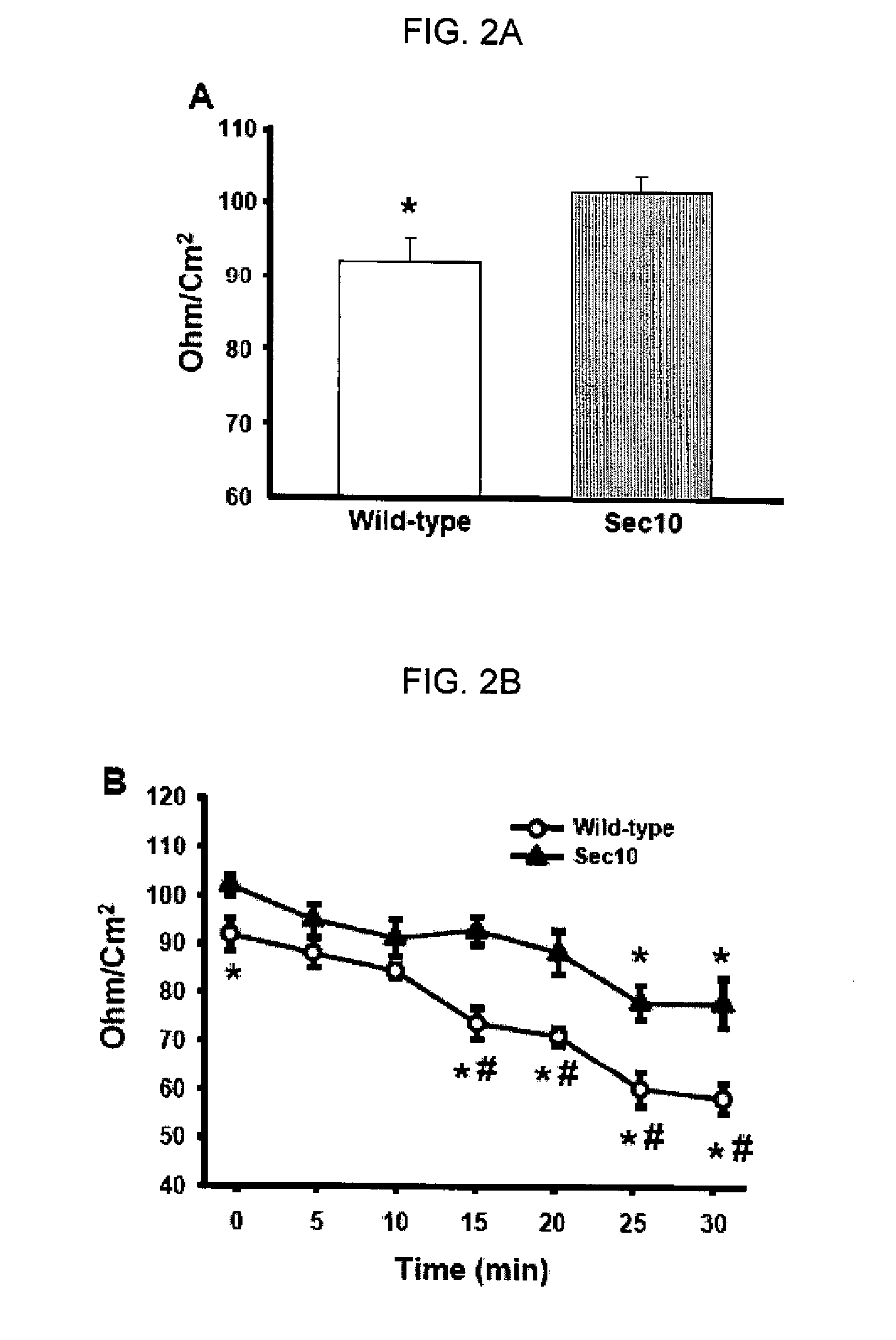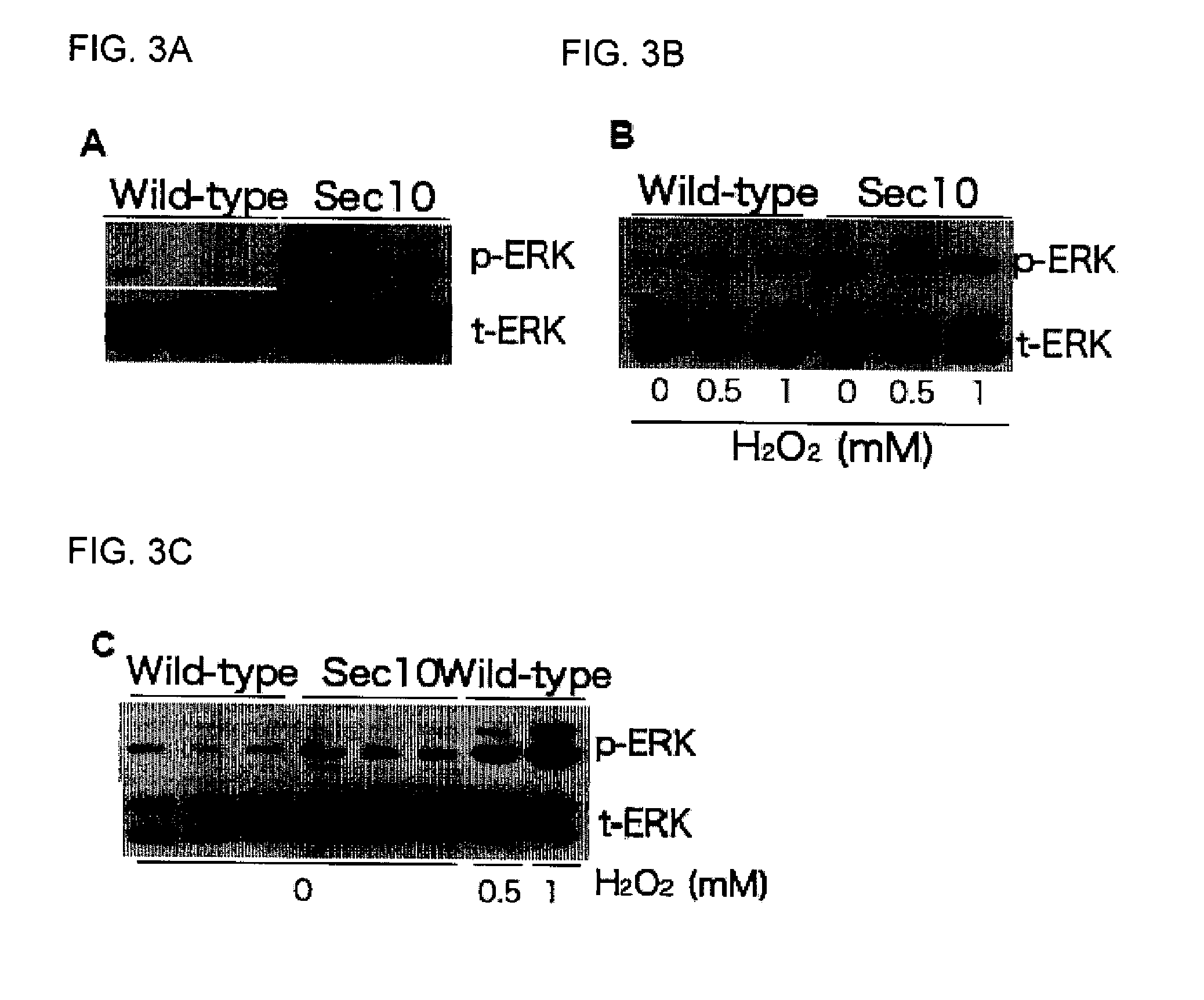AAV Vectors Expressing SEC10 for Treating Kidney Damage
a technology of kidney damage and aav vectors, applied in the direction of animal repellents, drug compositions, dsdna viruses, etc., can solve the apoptosis and necrosis death, and significant and increasing problems of aki/akn in hospitalized patients, so as to enhance the repair or regeneration of mammalian renal tubular epithelial cells, enhance the repair or regeneration of mamma
- Summary
- Abstract
- Description
- Claims
- Application Information
AI Technical Summary
Benefits of technology
Problems solved by technology
Method used
Image
Examples
example 1
The MAPK Pathway is Centrally Involved in MDCK Tubulogenesis In Vitro MDCK Cell System
[0078]Due to the complexity of organogenesis (the kidney is composed of more than twenty cell types and one million nephrons) and the transitory nature of cyst and tubule formation, it is difficult to study these processes in vivo. Relatively little, therefore, was known about cyst and tubule formation prior to development of an in vitro assay. The Madin-Darby canine kidney (MDCK) cell line, derived from the kidney tubules of a normal cocker spaniel in 1958, has been one of the most widely used systems for studying fundamental issues in epithelial cell biology. It was first observed that MDCK cells seeded to plasma fibrin, or collagen-coated sponge, formed multicellular structures. When MDCK cells were seeded within a three-dimensional collagen matrix, over ten to fifteen days they formed structures which were characterized by a polarized epithelium surrounding a fluid-filled space, apical microvil...
example 2
Materials and Methods
[0080]A. Cell Culture
[0081]Type II Madin-Darby canine kidney (MDCK) cells (Control cells) were obtained from Dr. K. Mostov (UCSF, San Francisco, Calif.). MDCK type II cells were overexpressing hSec10 (Sec10-overexpressing cells). See, e.g, Lipschutz et al, 2000 cited above. Cells were grown in modified Eagle's minimal essential medium (MEM) containing Earl's balanced salt solution and glutamine supplemented with 5% fetal calf serum, 100 U / ml penicillin, and 100 μg / ml streptomycin on the plastic culture dishes. Some cells were grown on the 24-mm Transwell 0.45 μm polycarbonate filter units coated with collagen (Corning Life Sciences, Lowell, Mass.). Pore size on all filters was 0.4 μm. Cell monolayers were used for experiments after 7 d of culture with daily changes in medium. Cells were plated as single cells in a three-dimensional (3D) type I collagen gel. To culture collagen matrix, cells grown on plastic culture dishes were harvested using trypsin-EDTA, and s...
example 3
The Exocyst Relocalizes During Tubulogenesis Consistent with a Role in Directing Membrane Traffic
[0094]Localization and relocalization of a protein complex are suggestive of function. As revealed in photographs (not shown), the exocyst was found to relocalize during the various stages of cyst and tubule formation, coincident with changes in cell polarity (Guo W, et. al., 1999 EMBO J 18: 1071-1080). In MDCK cells grown for ten days in a collagen gel, a fluid-filled cyst is formed in which staining is seen at the area of the tight junction using anti-exocyst Sec8 antibody. In a similar fluid-filled cyst formed by MDCK cells grown for ten days in collagen and stimulated with HGF, the exocyst can be seen relocalizing along the growing tubules in a pattern consistent with the changes in polarity that occur as tubules form. Sec8 is seen relocalizing into the extension. In another photograph of the cysts described immediately above, but during the cord stage of tubulogenesis, staining occu...
PUM
| Property | Measurement | Unit |
|---|---|---|
| time | aaaaa | aaaaa |
| temperature | aaaaa | aaaaa |
| total volume | aaaaa | aaaaa |
Abstract
Description
Claims
Application Information
 Login to View More
Login to View More - R&D
- Intellectual Property
- Life Sciences
- Materials
- Tech Scout
- Unparalleled Data Quality
- Higher Quality Content
- 60% Fewer Hallucinations
Browse by: Latest US Patents, China's latest patents, Technical Efficacy Thesaurus, Application Domain, Technology Topic, Popular Technical Reports.
© 2025 PatSnap. All rights reserved.Legal|Privacy policy|Modern Slavery Act Transparency Statement|Sitemap|About US| Contact US: help@patsnap.com



